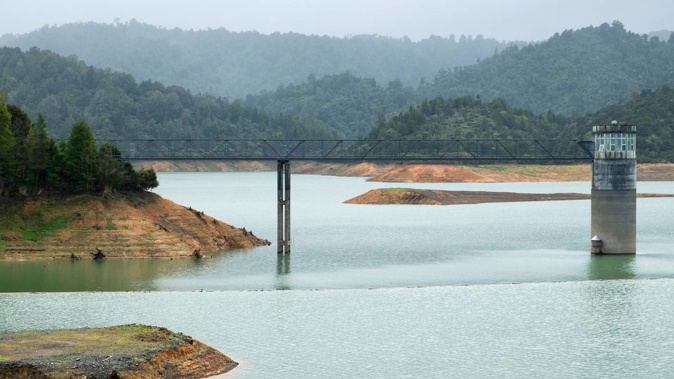
Auckland got more than its average February rainfall in just a few days this week yet it barely caused a ripple in the region's still-dwindling dam supplies.
Auckland has been in water crisis for nearly a year after a severely dry first half of 2020 caused the storage dams, which normally supply two thirds of Auckland's water, to drop to just over 40 per cent full.
Since then Watercare, Auckland's water management company, has been maximising its water take from the Waikato River and increasing supplies elsewhere to allow the "water batteries" to recharge.
Restrictions on outdoor use were also introduced mid last year for the first time in more than two decades, and although they were loosened this summer, Watercare still called for reduced use.
Aucklanders have been consistently smashing savings targets, yet the dams, in the Hūnua and Waitākere ranges, are still only 60 per cent full - the same as a week ago - against an average of over 83 per cent.
At 60 per cent full, it is even less than this time last year, when they were down to 67 per cent.
This is despite 72mm of rain falling in the Hūnua Ranges and 55mm in the Waitākere Ranges this week. According to MetService, the historical average in February for Auckland is 68mm.
"While this was a decent volume of rain, it had minimal impact on our total water storage – boosting it by less than 1 per cent," Watercare spokeswoman Rachel Hughes told the Herald.
"That's because the surrounding catchment areas were extremely dry and soaked up a lot of the rain – rather than it trickling down into the water storage lakes.
"We need a lot of rain to make up for the rainfall deficit caused by the drought."
December and January received less than half their average rainfall.
Despite this, Auckland's water savings efforts and the slight increase in rain compared to last year meant the rate of decline in the dams was about half what it was a year ago.
From January 1 to February 15, 2020, they were dropping 0.3 per cent each day.
This year, the rate of decline was 0.17 per cent a day.
"This is due to a combination of factors in our favour: reduced water demand, our new water supplies and a little bit of rain," Hughes said.
Aucklanders have this month been using an average 438 million litres a day (MLD) - well below the target of 511MLD, and the record use of last February, which one day cracked around 561MLD.
According to Niwa, the rain forecast is not going to get substantially better anytime soon.
"These dams take a lot of consistent rainfall to get recharged," meteorologist Ben Noll told the Herald.
"February will be about normal, but these long dry spells are looking to continue through summer and into the start of autumn."
Niwa's outlook to April was showing less than average rain for the region.
"There might be some variability in the start of March but overall it will maybe look more like summer than the start of autumn, so it is unlikely we will see the rain needed."
April and May meanwhile, which were exceptionally dry last year, were looking to have a slightly better chance of rain this time around, Noll said.
Along with urging Aucklanders to conserve water and hoses needing trigger nozzles, Watercare has been working to increase the volume of water available to relieve the dams.
Already work has been done to add 36MLD to the network, and by June another 54MLD will be available.
Watercare has had to spend an additional $209m because of the drought, affecting the additional debt it could take on for the following year, and part of its proposal to double water rates over the next decade.
Take your Radio, Podcasts and Music with you









